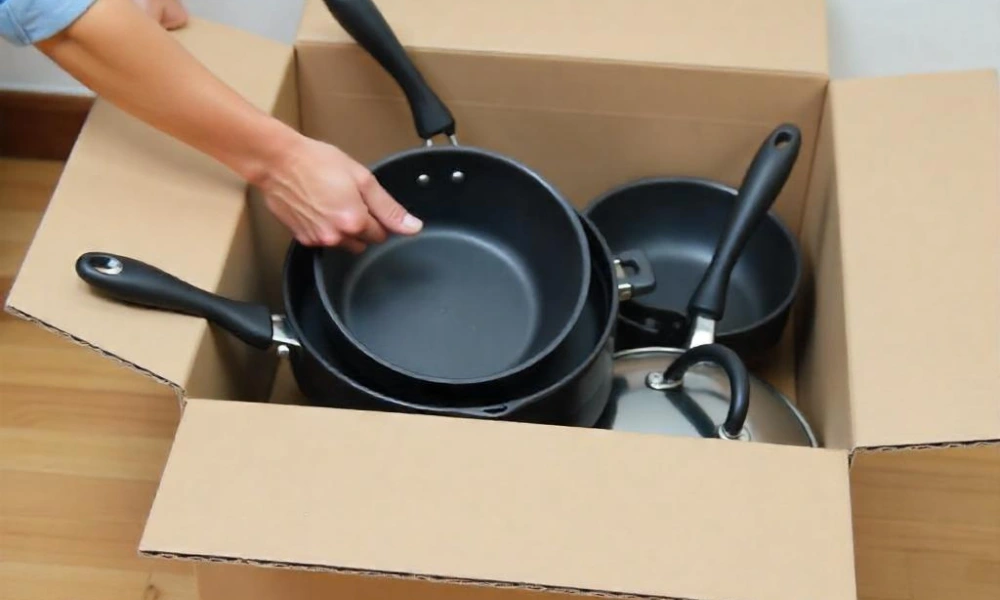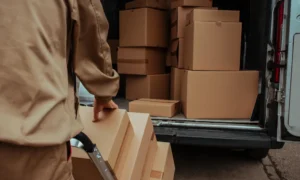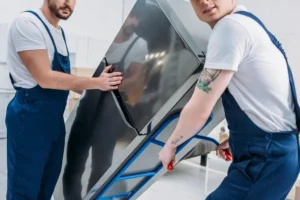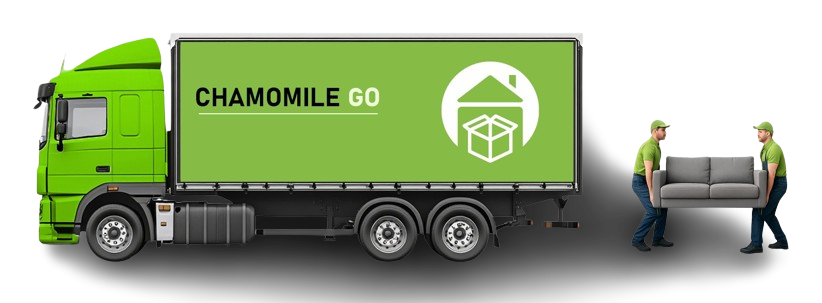How To Pack Pots And Pans is one of the most common questions homeowners ask when preparing for a move. Kitchen items are often bulky, expensive, and oddly shaped, making them tricky to transport safely. Whether you are moving across town or across the country, knowing the right techniques can save you from stress, damage, and unnecessary packing struggles.
Even brands like Chamomile Go emphasize the importance of properly packing fragile and heavy kitchen items because it can make a significant difference during relocation.
Why Packing Pots and Pans Correctly Matters
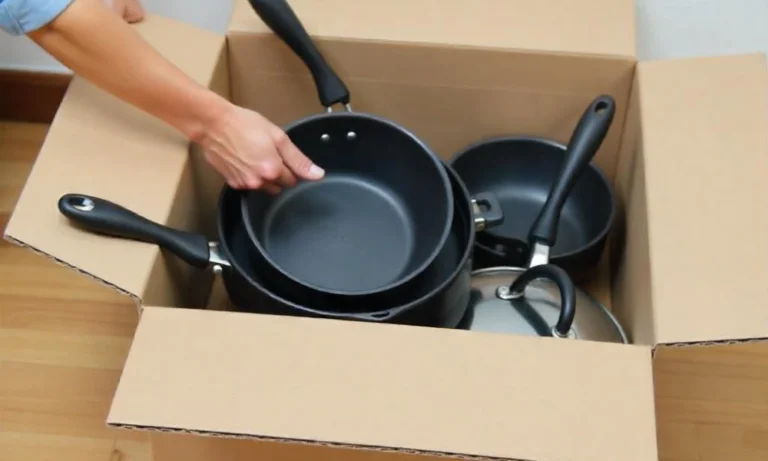
Moving kitchenware is different from packing clothing or décor. Pots, pans, lids, and accessories all vary in size and weight, and improper packing can lead to scratches, dents, or broken handles. Many people search for the best way to pack pots and pans because they realize that choosing the right method helps avoid damage, reduces space waste, and keeps everything organized for an easier unpacking experience.
Additionally, when you follow safe kitchenware packaging techniques, your items remain protected even during bumpy rides or long-distance moves. Since many of these tools are expensive, taking a little extra time to pack them properly can save you money and stress later, which is why Chamomile Go often recommends careful and well-planned packing for every move.
Understanding What You Need Before You Start
Before you begin, gather all the essential supplies needed for efficient kitchenware packaging. The right materials will help protect your surfaces and keep everything secure inside the moving boxes.
Supplies You’ll Need
You don’t need anything complicated, but the basics are essential:
- Medium or large moving boxes
- Packing paper or bubble wrap
- Dish towels or soft cloths
- Packing tape
- Dividers for lids
- Permanent marker for labeling
These simple materials make it easier to pack pots and pans safely, especially the heavy pots and pans that require extra padding.
The Best Way To Pack Pots And Pans Safely
You might wonder about the best way to pack pots and pans without wasting space or risking scratches. The most effective approach is to stack and separate them properly. Here’s how to do it step by step.
Step 1: Clean and Dry Everything
Start with clean, dry cookware. Residual moisture can cause mildew, stains, or odors during the moving process.
Step 2: Sort by Size
Group your pots and pans from largest to smallest. This helps you determine which items can be stacked and which need individual wrapping. Sorting first also speeds up the packing process.
Step 3: Wrap Each Piece
Even though many people attempt to pack pots and pans without wrapping, adding a protective layer is necessary. Use packing paper or dish towels to cover the interior and exterior of each piece. Heavy pots and pans may require extra padding to prevent metal-on-metal contact.
Step 4: Stack With Protection
Stack your cookware by placing smaller pieces inside larger ones. Make sure to insert a soft cloth or paper sheet between each item to prevent scratching or denting. For non-stick cookware, be especially careful to avoid damaging the coating.
Step 5: Secure Lids Separately
Lids can break or crack easily during transport. Instead of packing them inside the pots, wrap and place them in a separate box. Use dividers to keep them from clashing. This method is often recommended by professional packing service sherman oaks specialists.
Step 6: Pack the Box
Place the stacked pots and pans into a sturdy box. Make sure heavier items are at the bottom, while lighter or more fragile items stay toward the top. Fill extra gaps with towels, cloths, or crumpled packing paper to prevent shifting.
Step 7: Seal and Label
Seal the box securely with packing tape and label it clearly as “Kitchen – Pots and Pans.” This makes unpacking much easier and ensures movers handle the box with caution.
Tips to Protect Expensive Cookware
Some kitchen items require more attention than others, especially specialty cookware, glass lids, and premium pans. Here are a few additional tips to keep your cookware safe during the move:
- Wrap glass lids with two layers of bubble wrap
- Avoid stacking cast iron with lighter cookware
- Use smaller, separate boxes for fragile or expensive pieces
Using these tips ensures your cookware arrives at your new home in perfect condition.
How To Pack Pots And Pans for Long-Distance Moves
Long-distance moves require extra care because your items will spend more time on the road. In this case, kitchenware packaging needs to be more secure and tightly padded.
Add Extra Cushioning
For long trips, add thicker layers of padding on all sides of the box. Heavy pots and pans should be placed in medium-sized boxes instead of large ones to prevent the box from becoming too heavy to move.
Reinforce the Corners and Bottom
Use extra packing tape to reinforce the bottom and corners of the box. This reduces the risk of the box collapsing under weight.
Keep High-Value Pans Separate
High-end non-stick pans or enamel cookware should be packed in individual boxes for maximum protection.
Pack Pots And Pans in Small Kitchens
If you have a compact kitchen, packing can feel overwhelming. The key is to stay organized.
Declutter Before Packing
Set aside cookware you no longer use. Moving is an excellent opportunity to donate or recycle old pots and pans.
Pack By Category
Group similar items together such as:
- Baking tools
- Frying pans
- Stockpots
- Cast iron cookware
This category-based method helps you unpack faster and set up your new kitchen more efficiently.
Use Soft Liners
If you’re low on packing supplies, use dishcloths, oven mitts, or aprons as padding.
Pack Pots And Pans Efficiently Without Stress
Packing doesn’t need to be tiring or complicated. Once you understand how the process works, it becomes much easier. As you continue organizing your kitchen, follow simple methods and stay consistent with your approach. Even brands like Chamomile Go recognize that efficient packing not only protects your items but also saves you time on moving day.
Using the right methods allows you to avoid damage and makes unpacking at your new home a smoother experience. It also ensures your cookware stays clean, organized, and ready for use right away.
Final Thoughts
Packing kitchen items doesn’t have to be overwhelming. When you understand How To Pack Pots And Pans, the entire moving process becomes simpler and more organized. By using the right supplies, following step-by-step instructions, and adding plenty of protective padding, you can safely transport everything from fragile lids to heavy cookware.
If you need help or want expert packing assistance for your move, feel free to contact us for more guidance and support.
FAQs
Should I use bubble wrap or packing paper for pots and pans?
Packing paper works well for most cookware, while bubble wrap is better for glass lids or delicate finishes.
How heavy should a box of pots and pans be?
A packed box should stay under 40 pounds to make it safe and easy to lift.
Can I stack pots and pans without scratching them?
Yes, as long as you place padding, towels, or paper between each piece to prevent surface damage.
Is it okay to pack cast iron cookware with other items?
It’s better to pack cast iron separately because it is very heavy and can damage lighter cookware.
How early should I pack my kitchen before moving?
Most people pack their kitchen two to three days before moving day since it’s one of the most used areas in the home.
